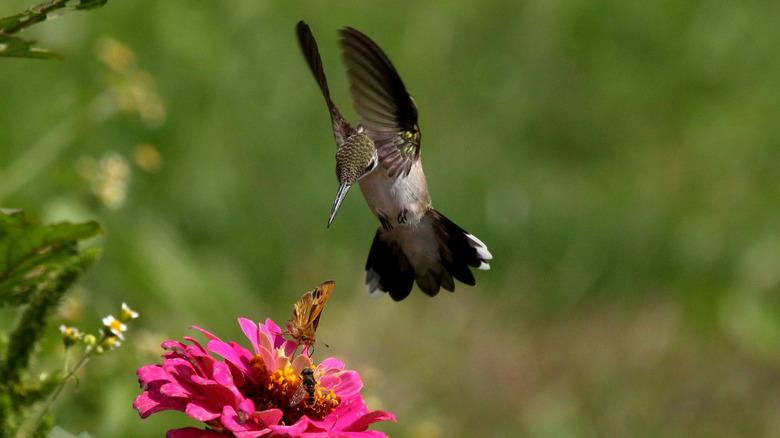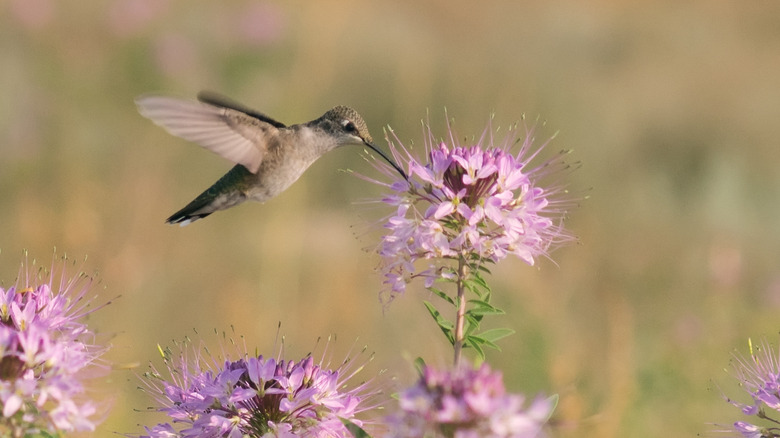Attract Hummingbirds & Pollinators With A Low-Maintenance Flower They Love
If you want to attract hummingbirds, bees, and butterflies without constant watering or care, the Rocky Mountain bee plant (Cleome serrulata) is the perfect fit. This vibrant wildflower grows tall and showy, sending up bouquets of pinkish-purple blooms that pollinators can't resist. As soon as the flowers open, they start attracting insects all day long.
Native to much of western and central North America, the Rocky Mountain bee plant thrives in wide open spaces like sunbaked roadsides and fields. It easily handles tough spots where many other flowers won't grow, making it the perfect choice for gardeners looking to support pollinators without constant care. The flowers bloom from early summer into fall, offering a prolonged season of nectar when pollinators need it most.
Each upright stem holds airy, spidery clusters of pink to lavender blooms, with long stamens that give the plant its signature "spiderflower" nickname. Its nectar-rich flowers attract monarchs as they migrate, while its seeds provide food for birds like doves, and it serves as a host plant for several white butterfly species. Even better, it drops seeds that often sprout the next year, keeping your pollinator patch going strong with little effort.
Plant Rocky Mountain bee plant in the right spot
You don't need perfect soil or extra care to grow Rocky Mountain bee plant. Just give it full sun, and it will reward you with nonstop blooms and busy pollinators all season long. This wildflower grows well in sandy, rocky, or even poor soils, as long as they drain well. Once the roots settle in, the plant handles dry conditions easily.
A little extra water during long dry spells can help boost flowering, but regular irrigation isn't necessary. Gardeners across USDA Hardiness Zones 3 through 8 can grow it successfully, especially if planting from a seed. You can sow the seeds directly outdoors in fall or early spring. The cold naturally helps break seed dormancy. For indoor starts, chill the seeds in the fridge for a few weeks before planting. When the seedlings grow strong enough, slowly adjust them to outdoor conditions before planting them outside once the frost risk is over, and thin them out so each plant has at least a foot of space to grow.
After that, this showstopper asks for very little. You won't need to apply any flowering plant fertilizer, and pests rarely cause problems. If you want to encourage more blooms or limit self-seeding, you can trim off the spent flowers, but it's optional. Though the plant is known for its strong odor, most people barely notice it, while deer and rabbits tend to avoid it. To go all out on a pollinator-friendly wildflower meadow, pair Rocky Mountain with native plants like blanket flower, prairie coneflower, or penstemon.

